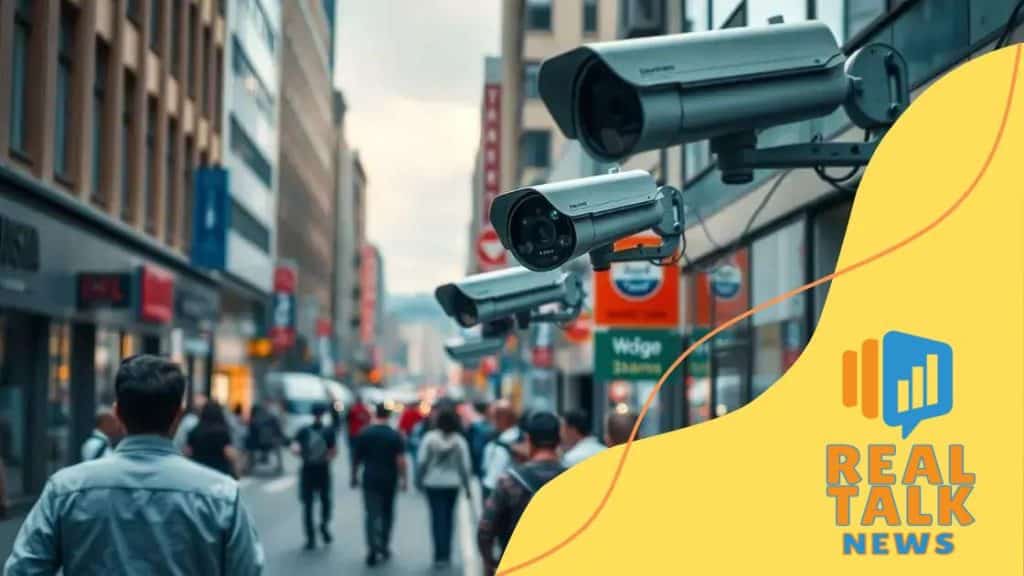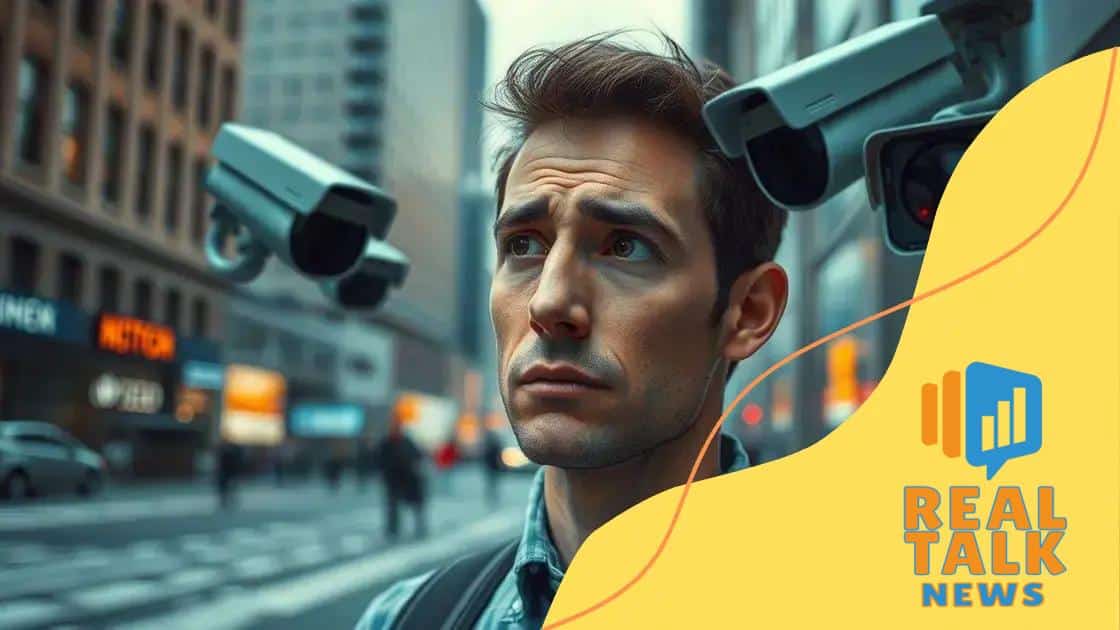The role of facial recognition in enhancing public safety

The role of facial recognition in enhancing public safety includes improving security measures, enabling quick identification of threats, and streamlining processes across various sectors like law enforcement and healthcare.
The role of facial recognition in enhancing public safety is becoming increasingly significant in our daily lives. Have you noticed how this technology is shaping security measures around you? Let’s delve into its impact.
Understanding facial recognition technology
Understanding facial recognition technology is essential to grasp its implications in our world today. This technology uses algorithms to identify individuals based on their facial features.
Facial recognition operates by analyzing facial patterns from images or video feeds. It converts these patterns into data, which algorithms then use to match against a database of faces. This process occurs in seconds, enabling real-time identification.
How Facial Recognition Works
At its core, facial recognition technology involves several steps:
- Image collection: Cameras capture an image of a person’s face.
- Face detection: The system detects where the face is located in the image.
- Feature extraction: It measures key facial features like the distance between the eyes or the shape of the jaw.
- Matching: The features are compared against existing records in a database.
These steps allow law enforcement and security teams to quickly identify individuals in various settings. The implications of this technology can aid in speeding up investigations and improving security measures.
Applications of Facial Recognition
Facial recognition technology has various applications across different sectors. For instance, in law enforcement, it can help track down missing persons or identify criminal suspects.
- Retail: Stores use facial recognition to enhance customer service and security.
- Airports: Enhanced security through quick identification of passengers.
- Unlocking devices: Personal devices now utilize facial recognition for user authentication.
Moreover, as it becomes more integrated into everyday life, the ability to recognize faces builds a safer environment. However, it’s crucial to strike a balance between safety and privacy.
Benefits of facial recognition for public safety
The benefits of facial recognition for public safety are numerous and impactful. This technology enhances security measures and provides swift identification of individuals.
When used by law enforcement, facial recognition can improve response times during emergencies. For instance, officers can quickly identify suspects during investigations, helping to resolve cases faster. This capability is crucial in high-pressure situations.
Advantages of Facial Recognition
Facial recognition offers several key advantages:
- Increased efficiency: Tasks that once took hours can now be done in moments.
- Deterrence of crime: The presence of surveillance can discourage illegal activities.
- Support for missing persons cases: Identifying individuals can help reunite families.
Additionally, this technology can aid in monitoring crowds during large events. By ensuring that safety protocols are followed, authorities can prevent potential threats from escalating, which is essential for public gatherings.
Community Safety Enhancements
Another notable benefit is the contribution of facial recognition to community safety. It allows for improved surveillance in critical areas such as public transportation hubs, schools, and stadiums. The technology helps to identify individuals who may pose a risk, ensuring a safer environment for everyone.
Furthermore, combining facial recognition with other security systems creates a comprehensive safety framework. This integration allows for real-time alerts and data sharing among different agencies, promoting a collaborative approach to public safety.
Privacy concerns with facial recognition

Privacy concerns with facial recognition technology are a significant topic in today’s discussions about security and surveillance. As usage increases, so do worries about individual rights and data protection.
Many people fear that this technology can lead to constant monitoring. Facial recognition systems can track individuals’ movements without their knowledge, which raises serious ethical questions. For instance, some ask whether it is right to surveil citizens in public spaces.
Key Privacy Issues
The main privacy concerns include:
- Data misuse: Personal information may be used for unauthorized purposes.
- Lack of consent: Individuals often do not consent to be monitored.
- False identifications: Errors in facial recognition can lead to wrongful accusations or detentions.
As facial recognition becomes more prevalent, the potential for abuse grows. Companies and governments using this technology need to ensure transparency in how data is collected and used.
Legal and Ethical Considerations
There is an ongoing debate about the need for regulations. Many argue that legal frameworks must be established to protect citizens’ rights. This could involve strict guidelines on how data is gathered, stored, and shared. Some suggest that individuals should have more control over their personal information.
Having clear and fair policies can help ensure the technology is used responsibly, balancing safety and privacy. As we explore its role in society, both advantages and concerns must be carefully weighed.
Real-world applications of facial recognition
The real-world applications of facial recognition technology are transforming various sectors. This technology provides innovative solutions for security, customer service, and even healthcare.
In law enforcement, facial recognition helps identify suspects with remarkable speed and accuracy. Police departments utilize it to analyze surveillance footage, enabling them to act quickly in critical situations. This tool can be essential during investigations, especially in crowded environments.
Key Areas of Application
Some key areas where facial recognition is making an impact include:
- Security Monitoring: Airports and public places use facial recognition to enhance safety. It helps identify wanted criminals or potential threats.
- Retail: Stores employ this technology to recognize repeat customers, allowing for personalized shopping experiences.
- Access Control: Many companies use facial recognition for secure entry to buildings. Employees can access restricted areas with just their faces.
Additionally, the healthcare industry is beginning to adopt facial recognition for patient identification. This ensures that patients receive correct treatments and medications. It also aids in streamlining check-in processes at hospitals and clinics, enhancing overall efficiency.
Emerging Technologies
Facial recognition is evolving alongside other technologies. For instance, when combined with artificial intelligence, it can learn and adapt over time, improving accuracy rates. Such advancements provide more reliable security measures and tailored experiences.
The integration of facial recognition with mobile devices is also on the rise. With the ability to unlock phones using facial features, this technology enhances personal security while being convenient for users. As it becomes more widespread, understanding its applications becomes vital for navigating this new landscape.
Future trends in facial recognition systems
The future trends in facial recognition systems promise to reshape how we interact with technology and security. As advancements continue, we can expect significant improvements in accuracy and usability.
One trend is the integration of artificial intelligence with facial recognition. AI enhances the ability of these systems to learn from data, which leads to improved identification rates and fewer errors. This combination could make facial recognition more reliable in diverse environments.
Emerging Technologies
Another trend involves biometrics. Companies are exploring ways to combine facial recognition with other biometric data like fingerprints or iris scans. This multi-factor authentication can increase security and reduce the chances of unauthorized access.
- Real-time processing: Future systems will likely analyze data instantaneously, allowing for quicker identification.
- Enhanced privacy features: Innovations may allow users to control how their data is used and shared, addressing privacy concerns.
- Mobile applications: Facial recognition technology may become more common in smartphones, providing users quick access to their devices.
Moreover, the integration of edge computing could process data closer to where it is generated. This approach improves speed and reduces the need to send data to remote servers, enhancing both performance and privacy.
Societal Impact
As facial recognition systems evolve, their potential impact on society will grow. While these advancements can enhance security, they can also lead to ethical discussions about surveillance and privacy. Balancing innovation with personal rights will be crucial as we move forward.
This ongoing dialogue will help shape how society views and adopts these technologies in daily life. The future of facial recognition holds great potential, and understanding these trends will be important for responsible use.
FAQ – Frequently Asked Questions about Facial Recognition Technology
How does facial recognition enhance public safety?
Facial recognition enhances public safety by providing quick identification of individuals, helping law enforcement respond to threats more effectively.
What are the privacy concerns related to facial recognition?
Privacy concerns include unauthorized surveillance and the potential misuse of personal data collected through facial recognition systems.
In what industries is facial recognition technology being applied?
Facial recognition is used in various industries, including law enforcement, retail for customer recognition, and healthcare for patient identification.
What future innovations can we expect in facial recognition systems?
Future innovations may include AI integration for better accuracy, enhanced privacy features, and faster real-time processing capabilities.





